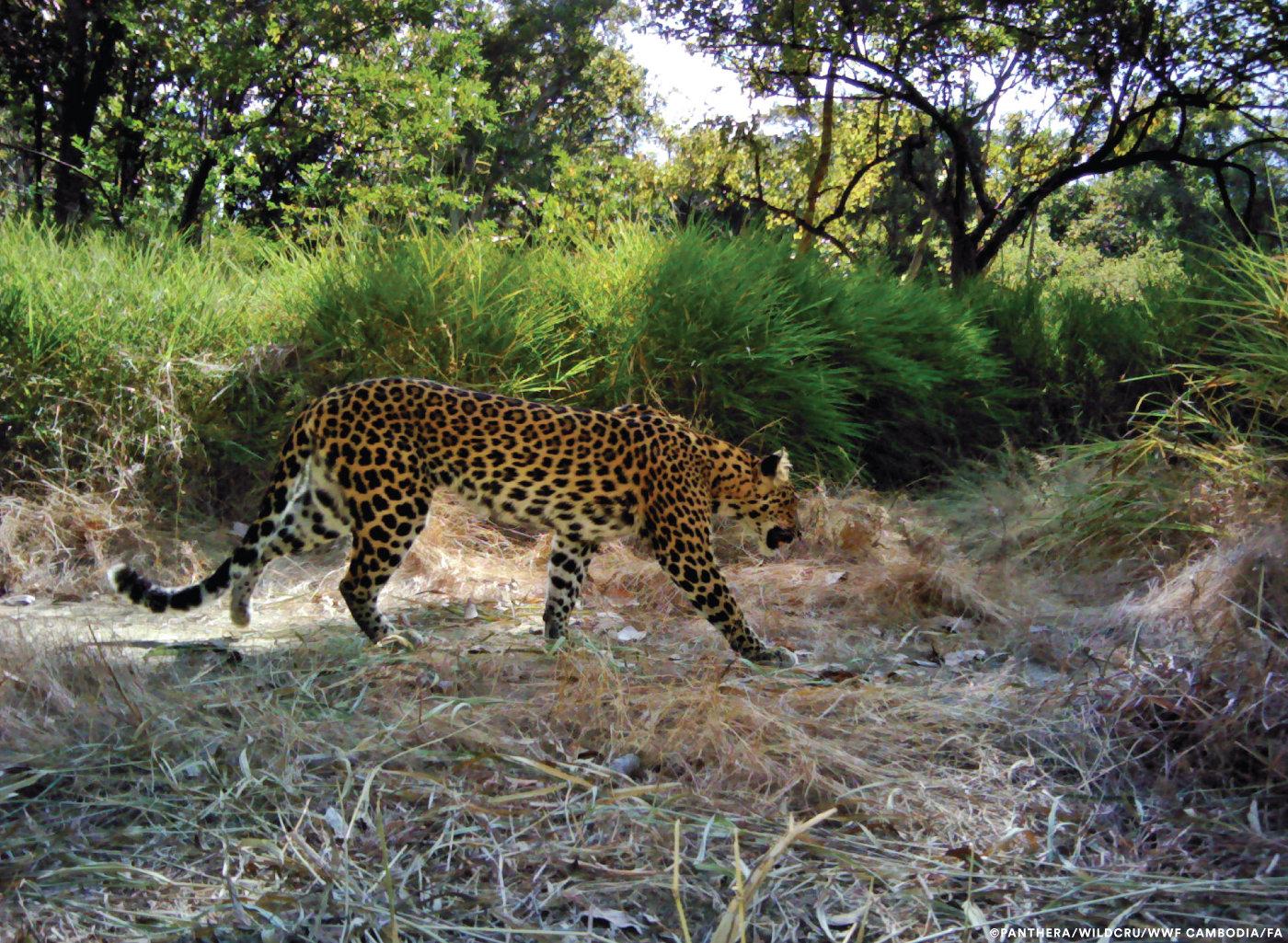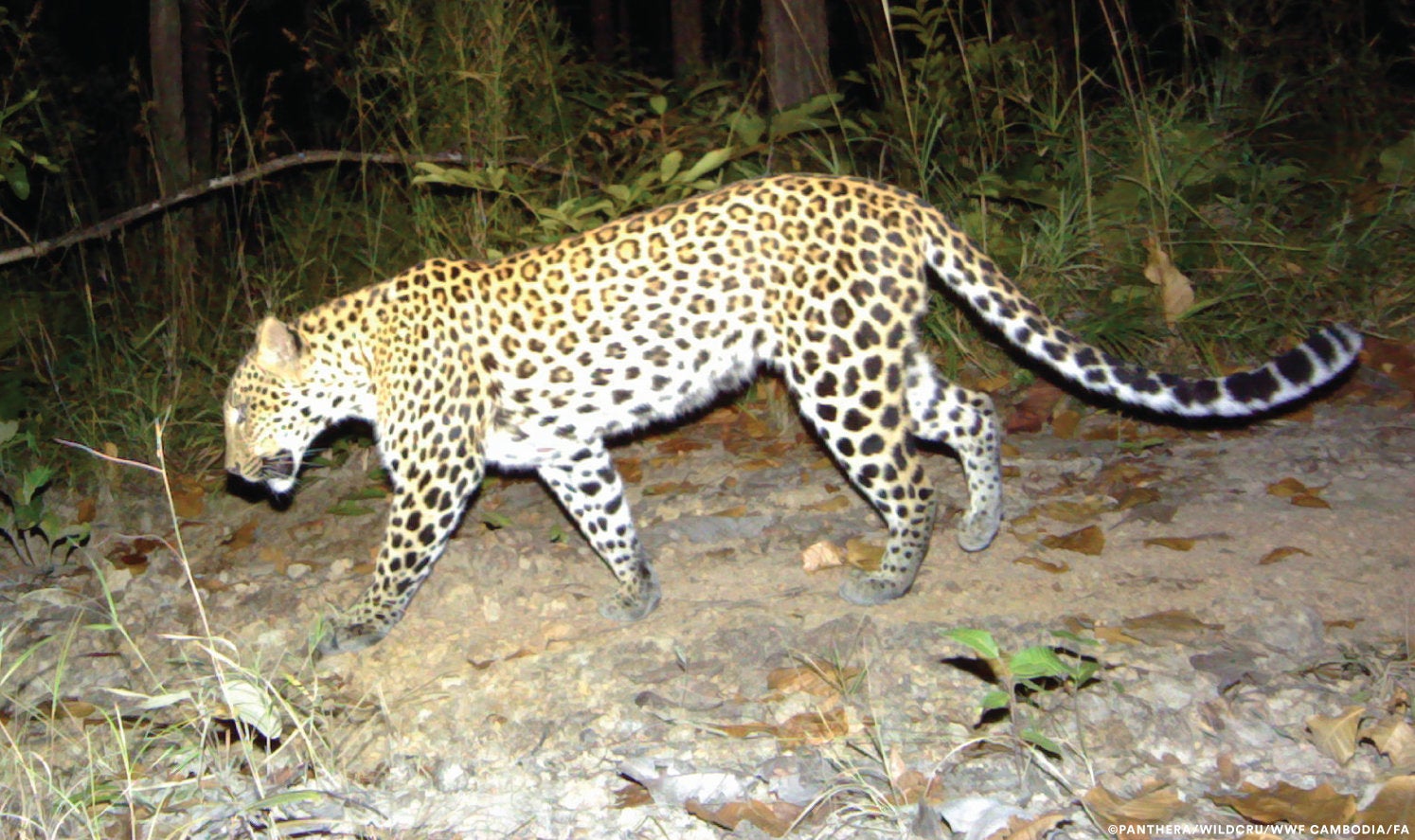Leopards in Cambodia 'on brink of extinction due to poaching', research suggests

Your support helps us to tell the story
From reproductive rights to climate change to Big Tech, The Independent is on the ground when the story is developing. Whether it's investigating the financials of Elon Musk's pro-Trump PAC or producing our latest documentary, 'The A Word', which shines a light on the American women fighting for reproductive rights, we know how important it is to parse out the facts from the messaging.
At such a critical moment in US history, we need reporters on the ground. Your donation allows us to keep sending journalists to speak to both sides of the story.
The Independent is trusted by Americans across the entire political spectrum. And unlike many other quality news outlets, we choose not to lock Americans out of our reporting and analysis with paywalls. We believe quality journalism should be available to everyone, paid for by those who can afford it.
Your support makes all the difference.Leopards are on the brink of extinction in Cambodia due to increased poaching, warns new research.
The study has confirmed that the world's last breeding population of leopards in the South East Asian country is at "immediate risk" of extinction, having declined an astonishing 72 per cent over just five years.
The population represents the last remaining leopards in all of eastern Indochina - incorporating Cambodia, Laos and Vietnam.
The research, conducted in Cambodia's Eastern Plains Landscape, revealed one of the lowest concentrations of leopards ever reported in Asia, with a density of one individual per 100 square kilometres.
Increased poaching, especially indiscriminate snaring for the illegal wildlife trade and bushmeat, is to blame for the dramatic decline, according to the report published in the Royal Society Open Science journal.
Study co-author, Dr. Jan Kamler, Southeast Asia leopard programme coordinator for conservation group Panthera, said: "This population represents the last glimmer of hope for leopards in all of Laos, Cambodia, and Vietnam - a subspecies on the verge of blinking out.
"No longer can we, as an international community, overlook conservation of this unique wild cat."
He added: "We must band together in action, not just in words, to curb the epidemic of poaching facing this gorgeous big cat and others around the globe."

Co-author Professor David Macdonald, director of Oxford University's Wildlife Conservation Research Unit (WildCRU), said: "Leopards are a monument to opportunism, adapting to habitats from desert to urban jungle, but their adaptability risks a deadly complacency: people think - 'oh, leopards will be fine'. They won't.
"Almost everywhere they are doing worse than people thought, and our findings show that in South East Asia they are heading for catastrophe."
Scientists were also shocked to discover that the primary prey of leopards was banteng - a wild species of cattle weighing up to 800 kilos (1,760 pounds).
In particular, male leopards targeted banteng, making it the only known leopard population in the world whose main prey weighed greater than 500 kg (1,100 pounds) - more than five times the leopard's own mass.
Scientists believe the Indochinese leopards' new choice of prey was triggered by the disappearance of tigers from the region in 2009, which created a "predatory void".
Prompted by the study's findings, Panthera and WildCRU are working with local and national groups to increase effective law enforcement and monitoring of the region, which will include the use of PoacherCams.
Historically found throughout all of South East Asia, the Indochinese leopard has lost 95 per cent of its range and is likely to be classified as Critically Endangered by IUCN later this year.
A separate study recently estimated that just over 1,000 breeding adult Indochinese leopards remain in all of South East Asia.
But conservationists say that just 20 to 30 reproductive individuals remain in eastern Cambodia, representing the "last hope" for the leopard's future in eastern Indochina.
They say poaching for bushmeat and the illegal wildlife trade, habitat loss, prey decline due to bushmeat poaching, and conflict with people are to blame, creating a "deadly cocktail" of threats facing leopards in Asia, and around the globe.
Study lead author Susana Rostro-Garcia, of WildCRU, said: "Much of the snaring in Cambodia, and across South East Asia, is driven by the rising demand for bushmeat.
"Wild landscapes are covered with thousands of snares set to catch wild pig and deer to supply bushmeat markets."
She added: "Unfortunately, these snares also negatively impact many other species, with leopards and other wildlife often caught as by catch, and their valuable parts removed and sold to illegal wildlife traders."
In particular, she said that as tiger numbers plummet due to poaching pressure, leopard skins and other body parts are increasingly coveted for use as status symbols and in traditional Asian medicines sold through the illegal wildlife trade.
SWNS
Join our commenting forum
Join thought-provoking conversations, follow other Independent readers and see their replies
Comments